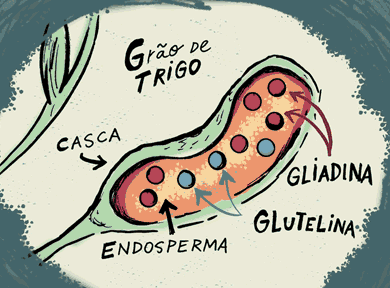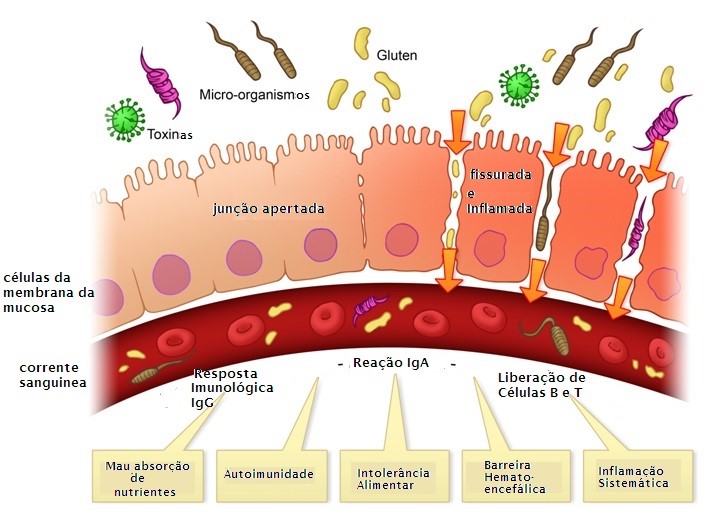The history of gluten
Derivado do grego Koiliakos, the word 'celiac’ It carries the meaning of “Belly disease”. Around 1887, a doctor named Dr. Samuel Gee gave the first starting studies on celiac disease. They fell into their hands patients with a degenerative disease described as “producing smelly and pale stools”, as well as other symptoms such as muscle aches, weakness, changes in appetite and stunted growth. Despite several attempts to diets (all with gluten) given their patients, Dr. Gee has not come close to discovering the origin of the disease, but it was the first to designate the name celiac patients.
The great discoverer of Celiac Disease was the Dutch doctor Willem Dicke. In 1932 Dr. Dicke created his interest in such symptoms appearing periodically in celiac. He began to study its relation to wheat flour intake after a diarrhea subsequent report to the consumption of bread. Just to find that gluten was the cause of malabsorption of nutrients in celiac, going to revolutionize the lives of patients by proposing a completely gluten-free diet.
But after all, what is gluten?
Gluten is a compound protein found in cereals such as wheat., rye, barley and oats. Acts as adhesive / adhesive which helps revenue to be more soft and structured (cakes, muffins, cookies, pizza dough, etc). Aside from these foods, all are gluten free, except of course, those suffering contamination during processing and those carrying gluten in formula just to gain a better consistency (Tomato Sauce, cheese, make ups, skin creams, etc)
Not a single molecule! If protein is a protein formed by the other two groups: glutenina e gliadina. The theory points the portion of gliadin as allergenic and harmful.

What Gluten Causes in Celiac Disease?
When coming into contact with the intestinal villi, for some unknown reason (perhaps genetic or environmental), the celiac's immune system is activated when gluten is ingested. The body believes that a foreign body is trying to invade the bloodstream and attempts to block this invader attacking him.
And that's where it comes to explaining why the organ most affected by celiac disease is the small intestine and also because we bowel biopsy at endoscopy to confirm celiac disease report (in fact the doctor is looking for excess immune cells in your gut).
By attacking the gluten and thereby the body itself, inflammation is caused which can be spread to various organs and be responsible for thousands of symptoms described by the disease's fans.

Chronic intestinal inflammation caused by the disease, It can lead to atrophy of the small intestine, impairing the absorption of many important nutrients for a healthy body.
It has been observed in several studies, the relationship between inflammatory bowel disease, migraine, bronchitis, sinusitis, asthma, among others, and consumption of gluten. When gluten is removed from power, or at least when their consumption is reduced, notes-is, in practice, that in general there is a significant minimization of these evils.
However, the need to withdraw completely gluten in the diet only exists for those who have an intolerance or allergy.
be careful with
the use of industrialized without gluten products replace products with gluten. Not always gluten-free products are healthier. To try to achieve the flavor and consistency of products that use wheat flour, They are added other ingredients such as sugar, preservatives, stabilizers, emulsifiers, etc. So if you make a gluten-free diet (It is celiac or not) It is always good to pay attention to packaging (ingredients). also prefer natural fresh products without gluten (rice, bean, fruits, vegetables, legumes) rather than processed product.
What is the best treatment for celiac disease?
The only existing treatment is the complete removal of gluten from the diet of celiac. Besides, as the withdrawal is made and the body is reestablished, it may be necessary to replace vitamins, minerals and probiotics.
The most common symptoms of celiac disease are
- Diarrhea or constipation
- Abdominal pain
- Stomach pain
- Flatulence
- Weight loss
- Nausea and vomiting
- Abdominal distension
- Anemia
Other Not-So-Common Celiac Disease Symptoms
- Peripheral neuropathy
- Chronic migraine
- Dermatite herpetiforme
- Infertility
- Chronic fatigue
- Canker sores
- Candidiasis
- Estomatitis
References:
World Gastroenterology Organisation Global Guidelines, Celiac disease. 2012.
Gluten-free diet: there are risks? A new approach to the isolation and characterization of wheat flour allergens.
The lie of gluten, Alan Levinovtz
The diet of the mind, Dr.David Perlmutter
